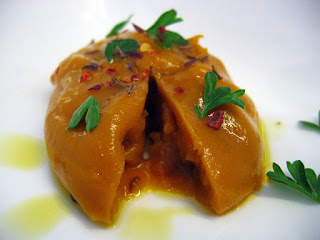
I don't have much of a sweet tooth, give me cheese and crackers (or maybe oatcakes) any day over a piece of cake. But I had a hankering for cookies. Unfortunately our pantry is rather lacking when it comes to the sweet side of baking, but I did happen to have a bit of peanut butter left in the pantry so all was not lost.

I made a pretty basic cookie dough 1 part sugar, 2 parts fat and 3 parts flour.
50 grams white sugar
50 grams muscovado sugar
150 grams butter
50 grams peanut butter (more if you want a stronger peanut flavour)
1 egg
1/2 teaspoon vanilla
1/2 teaspoon baking powder
Pre-heat the oven to 180°C, don't use fan bake.

Cream the butter, sugars and peanut butter until pale and all the sugar is dissolved.

Mix in the egg and vanilla.

Sieve in the flour and baking powder (I used salted butter, if you're using unsalted add 1/8 teaspoon of salt here).

Roll the dough in to balls (I got 22 in total) and flatten with the palm of your hand, or roll out and use a cookie cutter.

Sprinkle with a mix of sugar and cocoa. Bake for about 12 minutes.
Transfer the cookies to a cooling rack.
Now you can let them cool on the bench if you like a slightly chewy cookie, but I like mine crisp, so I put the cooling rack back in the oven (turned off) with the door ajar to dry out.
















































